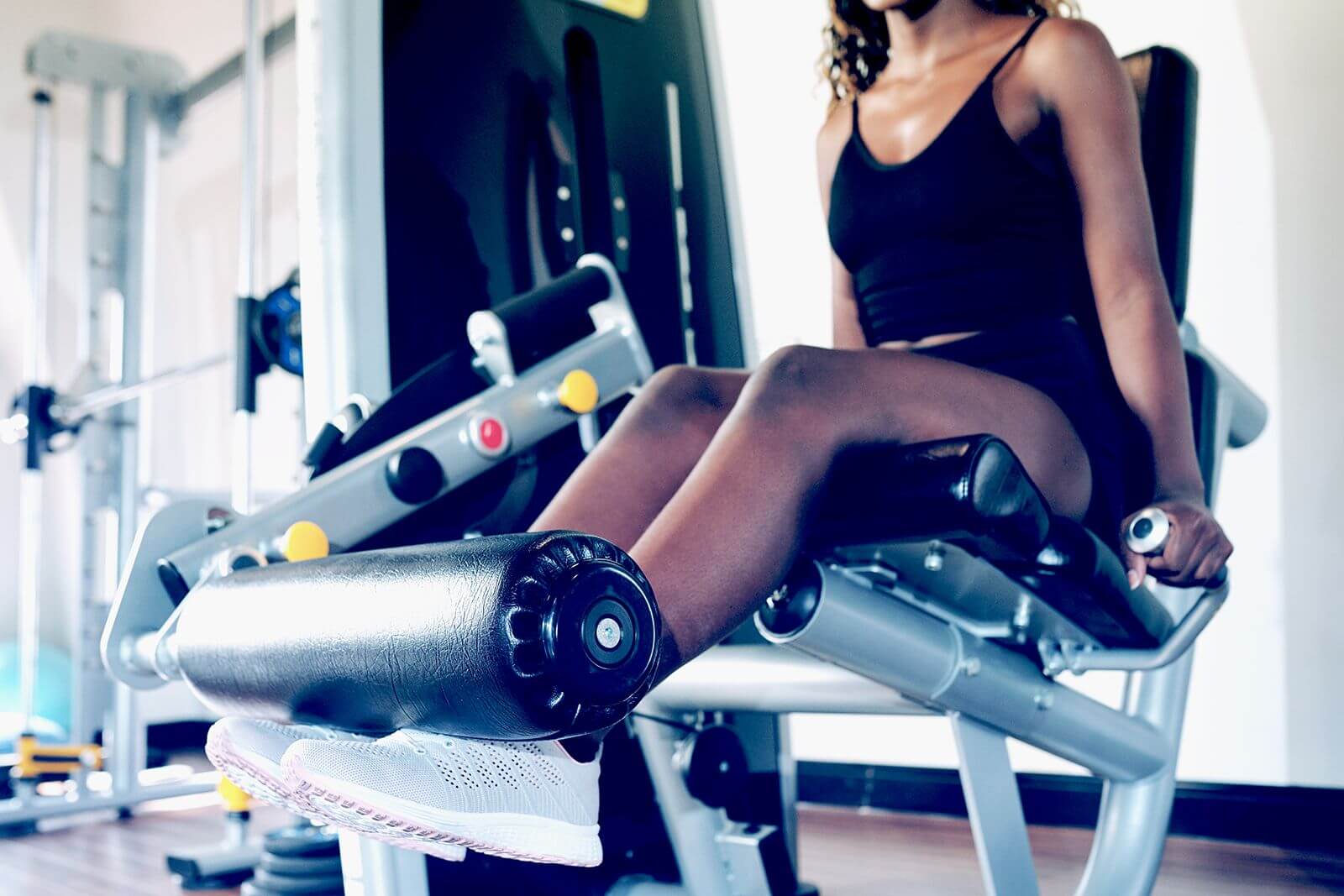Leg extensions allow one to target parts of the quad (i.e.: the rectus femoris muscle) that squats and other squat-like exercises can’t fully target. But can you target different parts of the rectus femoris if you manipulate your hip flexion angle when performing leg extensions?
Overview
What did they test? The researchers examined how different hip flexion angles affected muscle activity in different parts of different quad muscles.
What did they find? A hip flexion angle of 40 degrees elicited greater proximal muscle activity in the rectus femoris than the traditional 80 degree hip flexion angle often used when performing leg extensions.
What does it mean for you? Sitting in a way that allows you to be at a hip flexion angle of 40 degrees may lead to greater proximal rectus femoris muscle growth, although more research is needed.
What’s the Problem?
Your quads are composed of 4 muscle heads, the vastus lateralis, vastus intermedius, vastus medialis and rectus femoris. The vastus lateralis, intermedius and medialis heads of your quads are responsible for extending your knee, whereas the rectus femoris is responsible for both knee extension AND hip flexion as it crosses both the knee and hip joint. Exercises like the squat do a really good job at targeting the vastus heads of your quads but given that they extend the knee and hip simultaneously, the stimulus presented to the rectus femoris is limited. A previous study that looked at the effect of the smith squat versus the leg extension on different parts of the quad muscle found that the rectus femoris grew significantly in the group performing leg extensions while the vastus lateralis grew significantly only in the squat group 1. For anyone looking to maximize their quad hypertrophy, appropriate exercise selection is important to ensure that all parts of the muscle are developed equally which somewhat goes against the ol’ notion that “all you need for big legs is squats”. Sure, you can get huge legs just by squatting but it’s likely that your rectus femoris will be underdeveloped in comparison to performing both squats and leg extensions (or anything exercise that doesn’t extend the knee and hip simultaneously, eg: sissy squats).
Individuals interested in muscle gain, and more specifically physique athletes, may benefit from learning how different regions of the rectus femoris are affected by changes in their exercise technique when performing exercises like the leg extension, as it may allow them to target and improve “weak” areas of their quad.
However, aside from a developed rectus femoris resulting in bigger and more complete-looking quads, the rectus femoris is an important muscle that plays a crucial role in walking. More specifically, the part of the rectus femoris close to the hip, ie: the proximal part, is used when we swing our leg forward while walking, kicking or during hip flexion motion.
Although the proximal part of the rectus femoris may have important implications for both recreationally active and clinical populations, the literature investigating how it activates along its length is currently limited.
The study we’re looking at is among the first to examine how the different regions of the rectus femoris muscle respond to different hip angles!







